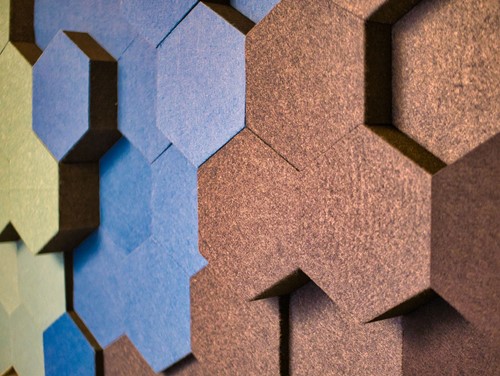
Sound can easily pass through walls and disturb other family members in your house or neighbors if you live in an apartment or townhome. You might also be interested in blocking sounds coming into your home or a room within your home. Soundproofing offers a convenient way to have better control over the amount of noise in a room if you’re trying to create a more peaceful environment. For example, you might need to have a quieter area to work from home or avoid bothering other family members or neighbors when you have a home theater. What material should you use to soundproof your walls? The following are some effective soundproofing options for your home.
Soundproof foam panels are a cost-effective way to absorb sound in your home. These panels are available in different shapes, including egg crate shapes, pyramid patterns, wave patterns and straight lines. Depending on how much soundproofing you need, look for thicker or thinner panels. Thicker foam panels can absorb more sound compared to thinner ones. Keep in mind that you’ll get better soundproofing quality when you cover as much surface area as possible.
Mass-loaded vinyl sound barriers can be used under drywall, floors and ceilings to block sound. This flexible material comes in thin pieces that can be placed in any areas where you need soundproofing. You can even use it to soundproof air ducts and pipes throughout your home. Mass-loaded vinyl sound barriers usually cost more than other options, but they’re also highly effective at blocking sound.
Insulation can be placed inside walls to stop sound from getting through. Your walls should already have insulation, since it’s mainly used to stop air from leaking. However, the type of insulation can make a difference in how much soundproofing quality you get. Acoustic mineral wool insulation, for example, typically provides better soundproofing than other types of insulation. If you want to switch the type of insulation inside your walls, you’ll need to remove the drywall, take out your current insulation and add your new soundproofing insulation.
Different drywall can provide your home with soundproofing. Even regular drywall offers some soundproofing, although it’s not as effective as other drywall types. Soundproof drywall can provide a higher degree of soundproofing, especially if you add insulation or other soundproofing methods before you install it. You should choose drywall with the right thickness, depending on the amount of soundproofing you need.
Acoustic caulk provides a simple way to make rooms more soundproof. This type of caulk can work even more effectively when you combine it with soundproof drywall or another soundproof material in or on your walls. You can use acoustic caulk to seal up cracks or openings in walls and ceilings and around doors or windows to stop sound from leaking out or getting in.

Kate Hogan – Amherst MA Realtor ® and Pioneer Valley
Your number one source for Real Estate in Amherst, MA, and surrounding towns!
Kate Hogan, a 20-year resident of Amherst and Top Producer at Brick & Mortar realty, has that unique combination of qualities you need in an agent: a big picture view of the entire Five College area, towns, and neighborhoods, a high standard of professionalism, and an innate talent for understanding homes. All of that, plus this savvy agent is known for being experienced, knowledgeable, and a lot of fun to work with. As a full-time real estate professional, Kate’s approach is focused on getting to know her clients as real people and taking care of them from beginning to end.